#dharavi in india
Explore tagged Tumblr posts
Video
Inside of Dharavi | धारावी में लोग कैसे रहते है | Dharavi Bank EP-01
0 notes
Photo
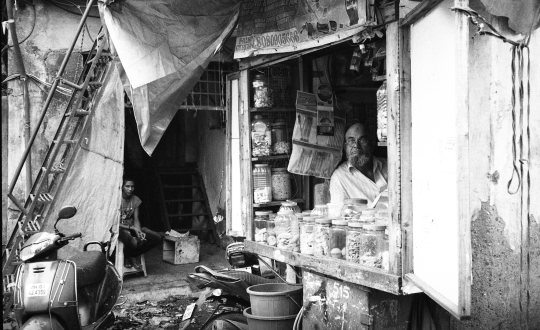
32 notes
·
View notes
Text
At the core of the issue in the protests is that the decision to improve the lives of Dharavi’s million-strong residents doesn’t take their agency into account.
“People like me have nurtured Dharavi for decades. Now suddenly we’re being told that we’ll be shifted to a ‘better home’. But has anybody even bothered to ask us if we really want to do that? We’re happy here only,” Kanta Bai, 70, who has been selling vegetables in the area for over three decades, told Nikkei Asia.
Dharavi’s proposed redevelopment, then, is a conjugation of two elements: first, the exploitation of the economically underprivileged; second, a top-down definition of development that imposes life-altering changes on marginalized citizens.
7 notes
·
View notes
Text
Daniel Soh, Winner Stage 1 Co-Lab Sustainability Prize 2023
Mackintosh School of Architecture
'Being An Architect in the Anthropocene' was a project for GSA Co-Lab 1. The theme for this project was 'Recycle and Re-use'. Daniel explored fabric as an unconventional building material. Recycling this material and using it for construction can lead to plugging a considerable gap in the circular economy loop for both fashion and architecture. Research and testing were carried out to explore the possibilities of recycled fabric as a construction material and possible ways in which fabric may sorted, assembled and disassembled in an architectural setting. Proposing to place the pavilion near H&M on Buchanan Street created a visual reminder of the waste produced by fast fashion. The pavilion also served as a communal space for commuters along their journey. The fabric used in the pavilion served to dampen sounds from traffic and enabled the framing of views of Buchanan Street while still offering privacy to commuters resting within. Detailed investigations were carried out to ensure each component of the pavilion could be sourced locally and had a designated way to be recycled once the pavilion had reached the end of its life. Given the temporal nature of the pavilion, some components could be borrowed from existing construction sites in the vicinity. Daniel believes collaboration and planning could significantly reduce the carbon footprint of our economy and ensure that one man's waste could indeed be another's treasure.
Studioworks1 P3 Social Architecture in the Global South
Daniel also investigated social sustainability in his individual research project for Studioworks 1. In-depth research into social architecture from around the world, including the PREVI Social Housing Project in Lima, Peru and the Alexandra Road Social Housing Project in London, UK. Taking this understanding, he further investigated an informal settlement slated to be cleared in Dharavi, Mumbai, India. In his studies, he detailed the macro growth and formation of informal settlements and the micro development of individual dwellings within the settlement. The vernacular and incremental nature of the buildings created a vibrant social setting for its inhabitants. Daniel is convinced that we could learn from their values and practices. Further studies and drawings were done to illustrate the social dynamic within the informal settlements and the complex nature and issues when governments intervene via slum upgrading or clearing. Considering half of the building stock has yet to be built - projected to be in cities of the global south, studying, understanding and collaborating with stakeholders and residents is essential to designing a future where everyone has access to disaster-resistant, socially abundant and ecological buildings.
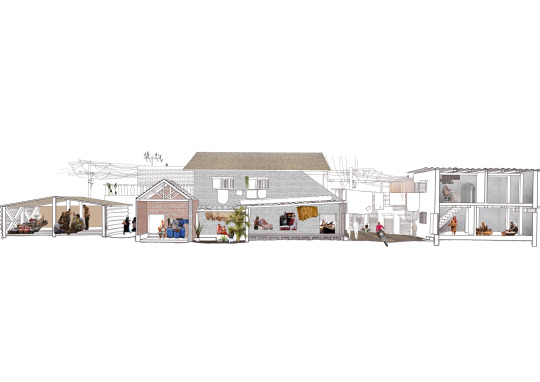
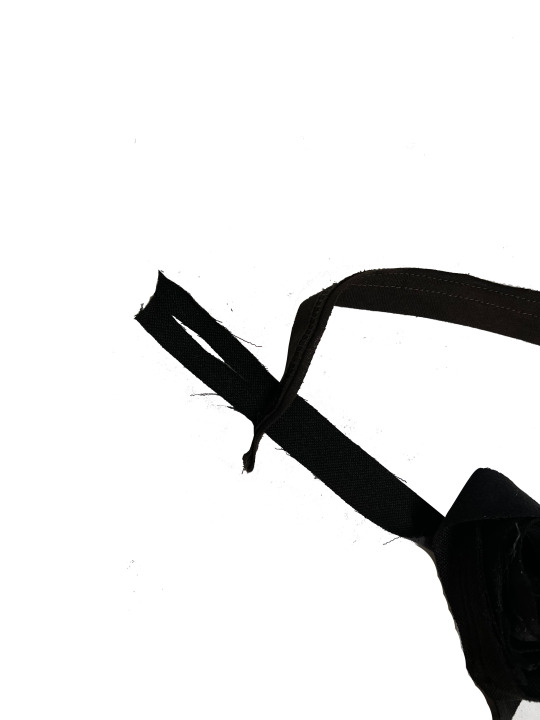

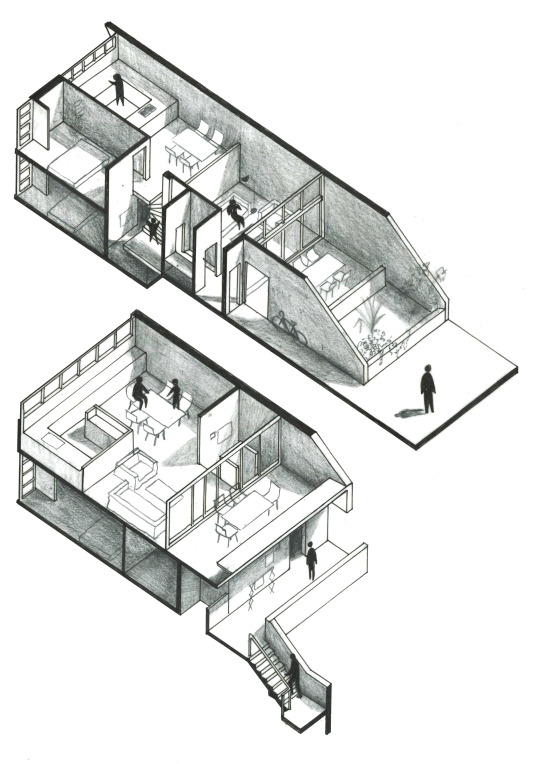


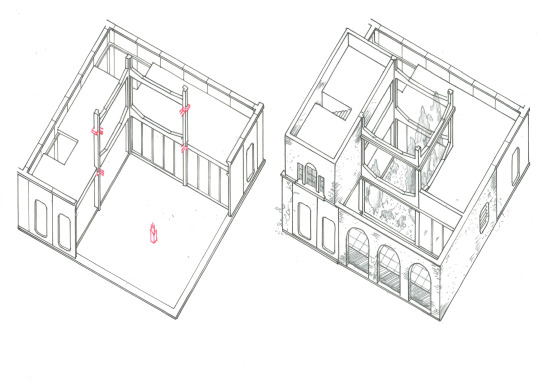
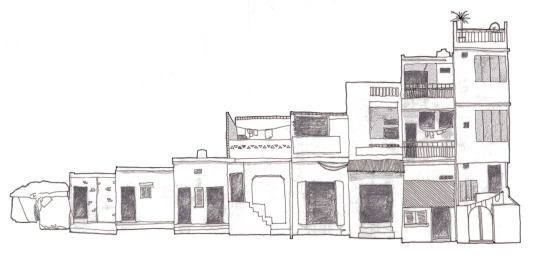
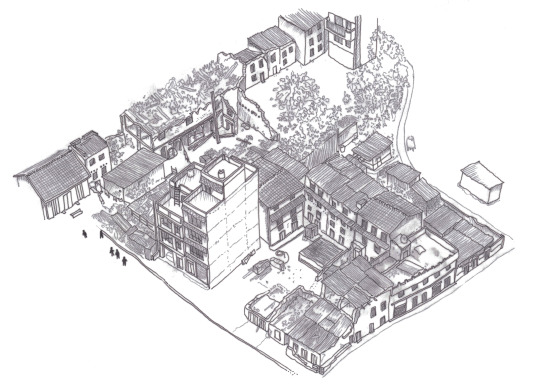


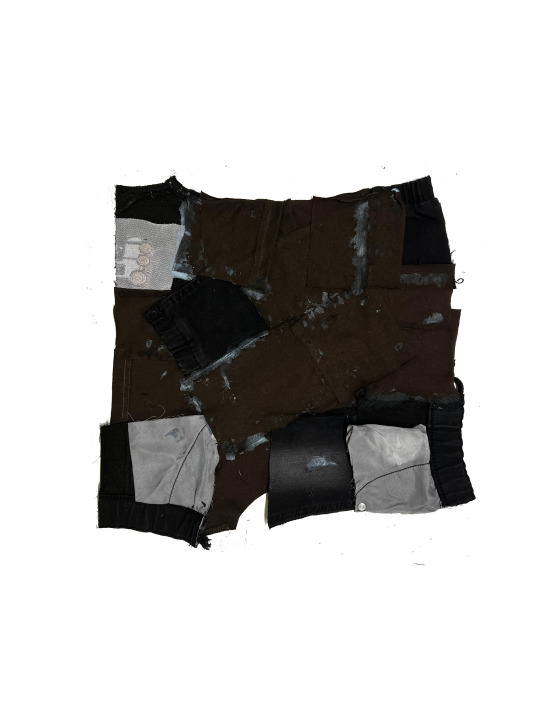
More here
#sustainability#climate crisis#architecture#social architecture#PREVI#Lima#Peru#London#Dharavi#Mumbai#India#Social Housing#slum
0 notes
Photo

Most of these products are made in tiny manufacturing and sold in domestic as well as international markets. Most of these things are created innovatively, in a very small space! Muslim people making a shrine for Hindus 🛕 Dharavi Slum Tour 👣 Contact us for bookings!! www.mumbaidreamtours.com +91 900413 5215 #photooftheday #dharavi #dharavislumtour #smallbusiness #shrine #wastoutofbest #recycling #mumbai #mumbaidreamtours #incredibleindia #slumtourism #tourism #traveler #travelphotography #mahim #india #makeinindia (at Dharavi, Maharashtra, India) https://www.instagram.com/p/CoObWCyh4DM/?igshid=NGJjMDIxMWI=
#photooftheday#dharavi#dharavislumtour#smallbusiness#shrine#wastoutofbest#recycling#mumbai#mumbaidreamtours#incredibleindia#slumtourism#tourism#traveler#travelphotography#mahim#india#makeinindia
0 notes
Text

Rahul Mishra is a renowned Indian fashion designer making significant contributions to the world of haute couture.
Rahul Mishra was born and brought up in Kanpur, a small industrial city in Uttar Pradesh, India. Growing up in a modest middle-class family, he was encouraged to pursue his dreams. Mishra discovered his passion for fashion at a young age and started experimenting with design and stitching. Rahul started his journey as a designer in Mumbai, where he worked with embroiderers who lived in the urban slum locality called, Dharavi. He attended the National Institute of Design in Ahmedabad, where he honed his skills and developed a unique design philosophy rooted in sustainability and craftsmanship.
In 2014, Rahul Mishra created history by becoming the first Indian designer to win the prestigious International Woolmark Prize. He competed against talented designers from around the world and impressed the jury with his collection inspired by the beauty of rural India. This achievement brought global recognition to Mishra and opened doors for him to showcase his work on international platforms.
Rahul Mishra’s journey as a designer encompasses not just creating beautiful garments but also making a profound impact on the fashion industry. Through the Hand embroidery and how it plays a pivotal role in Rahul Mishra’s creations. His commitment to reviving traditional craft techniques led him to collaborate with artisans across India. Mishra’s intricate embroidery work showcases the skill and artistry of these craftsmen while adding exquisite detailing to his designs. Through his work, he not only preserves ancient embroidery traditions but also empowers and supports the artisan community.
Commenting on the topic he said : "My objective is to create jobs which help people in their own villages; I take work to them rather than calling them to work for me. If villages are stronger, you will have a stronger country, a stronger nation, and a stronger world. My entire philosophy revolves around that. The product will go through evolution… it will change, improve, but the philosophy is constant.”
Rahul’s work in preserving local cultures and crafts in India as well as his efforts in sustainably are among the many reasons that the designer has been featured on the global influential list of ‘BoF 500’ for four consecutive years as well being awarded the title of “International Fashion Award for Sustainable and Ethical Brand’ by Chambre Monegasque de la Mode at the Monte Carlo fashion Show.
151 notes
·
View notes
Note
Hello.
Any books/article/paper/ recs on the topic of ghettos/slums in urban areas? (I think you recommended something like this once but I can't seem to find that answer 🥹)
Basically what I need is why these settlements exist around urban areas, their history, "permanence" despite attempts to remove them and their socio-economic impact. It could be comparative as well, like say Favela in Brazil compared with Dharavi in Mumbai. Or anything related to the topic that you can recommend is welcome.
Thanks for your help. Really appreciate it, have a great day. 💚🍏🌿🦚
Hello! I'm sorry, I sent this to my drafts half-answered and then promptly forgot to finish it. I hope these help:
Ghettoisation of Economic Choices in a Global City by Sumeet Mhaskar
Muslims in Indian Cities by Christophe Jaffrelot has several chapters on marginalisation and communal ghettoisation within urban spaces
Megacity Slums by Marie-Caroline Saglio-Yatzimirsky is actually quite perfect for you. It compares social exclusion and slums in India and Brazil. The author also has a dedicated book on Dharavi and its economy
Rhetoric of the Slum by Pushpa Arabindoo
Theory and Reality of Urban Slums by Ivan Turok
The Political Economy of Slums by Sean Fox
I hope this helps!
30 notes
·
View notes
Text

Success from the slums:
Dharavi, one of the largest slums in Asia, located in Mumbai, India, is often associated with severe poverty and overcrowded living conditions. However, it has also been a place where remarkable individuals have emerged despite these challenges. Here's a brief report on some notable kids and young adults from Dharavi who have excelled in various fields:
1. Kailash Satyarthi
While not a child from Dharavi, Kailash Satyarthi's work has directly impacted many children from slums like Dharavi. He is a Nobel Peace Prize laureate recognized for his efforts in combating child labor and advocating for children's rights through his organization, Bachpan Bachao Andolan (Save the Childhood Movement). His work has inspired many from Dharavi to pursue education and better their circumstances.
2. Siddhartha Khemka
Siddhartha Khemka, originally from Dharavi, has made a name for himself in the field of entrepreneurship and social work. He founded the organization The Dharavi Project, which works to empower local youth through education and skill development. His journey from Dharavi to a successful social entrepreneur is a testament to the potential within the community.
3. Sujay Bhat
Sujay Bhat, a young student from Dharavi, excelled in academics despite the challenges of his environment. He received a scholarship to study at one of Mumbai’s prestigious schools, showcasing his academic prowess and determination. His success has become an inspiration for many other children in the community.
4. Ramesh Yadav
Ramesh Yadav, a young athlete from Dharavi, has gained recognition in local and national sports competitions. His achievements in track and field events have drawn attention to the potential of athletic talent in the slum, highlighting the importance of supporting sports and physical education.
5. Aarti Patil
Aarti Patil, a talented artist from Dharavi, has gained acclaim for her artwork and has exhibited her pieces in various art shows. Her success as an artist is significant, considering the limited resources available to her growing up. Aarti’s work not only provides her with a platform but also helps in challenging the stereotypes associated with Dharavi.
Challenges and Opportunities
Despite these success stories, many children in Dharavi continue to face significant obstacles, including limited access to quality education, inadequate infrastructure, and economic hardships. However, organizations and initiatives aimed at supporting these children are making a difference. Programs focused on education, vocational training, and mentorship are crucial in providing these young individuals with the tools they need to succeed.
Conclusion
The achievements of these individuals from Dharavi illustrate the remarkable potential that can emerge from even the most challenging environments. Their stories serve as powerful reminders of the importance of providing opportunities and support to underprivileged communities. By addressing systemic issues and fostering talent, we can help more children from Dharavi and similar areas realize their full potential.
Opportunities exist in spite of hindrances. But a lot has to be changed.
3 notes
·
View notes
Text

Seoul, South Korea, 2004 © Patrick Zachmann/Magnum Photos.
After Dark
Introducing a new collection of limited edition posters that explore the seductive and transformative power of the nighttime hours.

From the series, I Am About To Call It A Day, 2012 © Bieke Depoorter/Magnum Photos.

Ulyanovsk, Russia, 1990 © Peter Marlow/Magnum Photos.

A little girl playing in Laxmi Chawl, a neighborhood of Dharavi. The little lightbulbs are put out for an upcoming neighborhood wedding. India, 2006 © Jonas Bendiksen/Magnum Photos.

The silhouette of a mule in the dark, 2021 © Alessandra Sanguinetti/Magnum Photos.

'Flames and Light' WWI spectacle. Centenary of the Battle of Verdun, Verdun, France, May 2016 © Thomas Dworzak/Magnum Photos.
#patrick zachmann#photographer#magnum photos#seoul#south korea#after dark#posters#night photography#bieke depoorter#ulyanovsk#russia#peter marlow#india#jonas bendiksen#street photography#alessandra sanguinetti#thomas dworzak#verdun#france
2 notes
·
View notes
Note
16, 21, 26 ask game
thank you for the ask! these are all great questions
16. which stereotype about your country you hate the most and which one you somewhat agree with?
oooh. like @ashesandhackles said, it's very annoying when people are surprised we can speak english, lol. i've seen people being surprised at the fact that we have internet. almost every instagram reel about india will have comments about how the people all shit in the streets😂
ones i agree with? hmm the cows everywhere one is true 😂😂india also is genuinely quite dirty. it's very common for people to be casually racist 😂and we do shake our heads while talking
21. if you could send two things from your country into space, what would they be?
food and dance, i think. aliens deserve to see kathak and enjoy mutton seekh kebab
26. does your nationality get portrayed in Hollywood/American media? what do you think about the portrayal?
it does!
when i think of india in hollywood, inevitably i think of slumdog millionaire. now i fucking love that movie. and i love danny boyle (shout out to steve jobs 2015) but it does paint a certain picture of the country. which isn't...inaccurate, exactly, but it's a tiny little pixel of a massive painting. the events/setting of the movie is by no means unrealistic for a modern india but for someone like me who has only grown up in major cities in a pretty much upper middle class family, it feels like a completely different universe. all that to say, india contains multitudes and the usual poverty porn of the country you get is not at all relatable to a significant amount of the population. i think the very location of slumdog millionaire proves my point, really. dharavi is the largest slum in the world, and right across the street lives mukesh ambani, the 9th richest man in the world.
tangentially, my favourite portrayal of india in western film is wes anderson's 'the darjeeling limited'. it's not set in a major metro city but it's not poverty porn either. and i think, somehow, it really captures an essence of india! little scenes like adrien brody being amused at boys playing cricket with a tennis ball....it makes me feel so fond of my country <3
“hi, I’m not from the US” ask set
6 notes
·
View notes
Text
don’t fw how we only study Dharavi instead of literally anywhere else in India
3 notes
·
View notes
Text
History of Mumbai Real Estate

Mumbai's property market has a rich history. From colonial-era estates to high-rise development, the city's skyline has dramatically transformed. Now we explores Mumbai's real estate journey, Going through factors that shaped its growth, iconic events & Innovations in infrasructures.

Early Days Of Mumbai Residential Communities
Before the British Influence, Mumbai was seven islands with fishing communities ruled by local kings. Portuguese took over in 1534, then British in 1661. The British East India Company leased the islands in 1668, starting the city's growth.

Turning Into Shape Of City At 1800s
British Government joined the 7 islands, making space for a new city. In South Mumbai, especially the Fort area, became the center for business and government. Famous buildings like the High Court and the university were built.
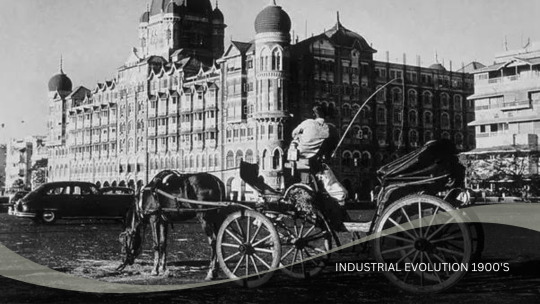
Industrial & Residential Buildups in 1900s
Mumbai become a big industrial center, especially for textiles in Late 1800s and early 1900s. For the growing workforce, new neighborhoods and apartment buildings (chawls) were built in areas like Parel. After India's independence in 1947, Mumbai kept growing fast. People from all over India came to live here & Demands For more housing spaces.
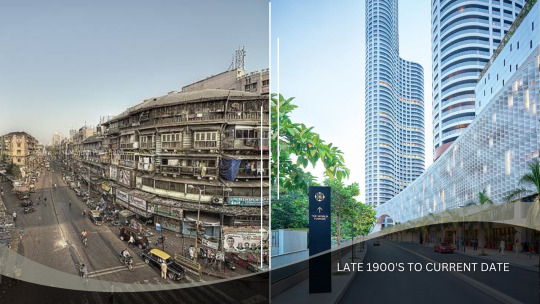
Modernization and Architecture Challenges At Late 1900s and Today's Date
The 1990s economic reforms led to a real estate boom. New rules, more money, and city growth led to tall buildings and better infrastructure. New business areas like Bandra-Kurla Complex popped up, shifting some business from South Mumbai. Today, luxury apartments and gated communities are in demand, especially in areas like Worli. Big projects like the Metro and the Sea Link help people move around the city easier. Affordable housing remains an issue due to Increasing demand & Prices. The government is trying to build more homes for low- and middle-income people in Sub-Urban areas.
History Of Events & Facts Of Mumbai Real Estate
A large number of people still live in slums, like Dharavi, one of Asia's biggest Slum.
In Early 1800s Mumbai was a scattered Colonial Districts & Now Mumbai's skyline has undergone a dramatic transformation which was never Imagined by British Rulers.
A law called RERA was introduced in 2016 to make the real estate market fairer for buyers & Investors.
Mumbai's real estate keeps changing with the city's economy, society, and politics. It's one of the world's most expensive and dynamic real estate markets, reflecting Mumbai's role as India's financial capital.
#history of mumbai real estate#mumbai real estate backstory#mumbaiproperties#realestateprojects#dreamhome#luxuryliving#sunblonderealty#propertyfinder#maharera
2 notes
·
View notes
Text

3 notes
·
View notes
Text



Hide and seek with children from the slums of Shammi Nagar Dharavi.
Some came to me to talk and make pictures, others were following me in the narrow alleys and running away laughing if I turned to face them with the camera. I never was fast enough to catch that little one with her elegant dress.
2023-11-09 India, Maharashtra, Mumbai (Bombay)
#travel#india#photography#streetphotography#portrait#gaelic69#wanderlust#cityscape#voyage#photographer#childhood#children#mumbai
5 notes
·
View notes
Text
Things to do in Mumbai
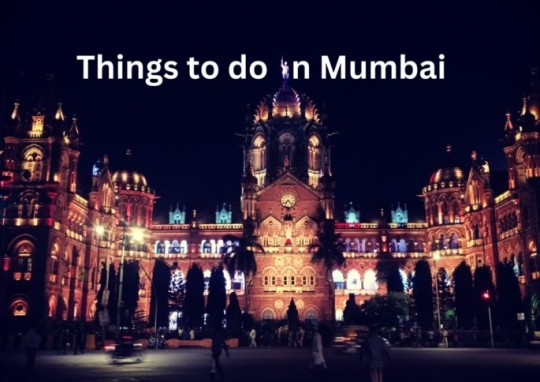
Mumbai activities that consider the city’s extensive history, eclectic culture, mouthwatering cuisine, and well-known landmarks. This improved tour provides a more thorough look at this vibrant city:

Mumbai, often known as Bombay, is the financial and entertainment center of India. It is a city that is continually busy. Here, tradition, culture, and modernity all coexist to give visitors an extraordinary and one-of-a-kind experience. One of your first destinations should be the magnificent Gateway of India, a symbol of Mumbai’s past and a well-liked expedition starting point. Some of the best specimens of Victorian Gothic architecture can be found in the surrounding historic Chhatrapati Shivaji Maharaj Terminus, a UNESCO World Heritage site.
The museums in Mumbai maintain its cultural heritage. Visit the Chhatrapati Shivaji Maharaj Vastu Sangrahalaya to discover how art and history are entwined and the Dr. Bhau Daji Lad Institute to learn about the history of the city.
There is a sensory explosion of sights, sounds, and smells in Mumbai’s crowded markets. The well-known retail district Colaba Causeway is where you can find a wide selection of apparel, jewelry, handicrafts, and souvenirs. Contrarily, Crawford Market is a bustling center for locally grown foods, spices, and other pleasures. While visiting these marketplaces, don’t forget to try some of Mumbai’s renowned street cuisine. The city’s street food culture is a gastronomic journey all on its own with dishes like the hot vada pav, delicious pav bhaji, and tangy bhel puri.
To get a taste of Mumbai’s diversity, visit Dharavi, one of Asia’s largest slums, where you can take a guided tour and hear about the resilience and creativity of its residents. This in-depth encounter will put your prejudices to the test, and you’ll leave with a newfound respect for the feeling of community in the area.
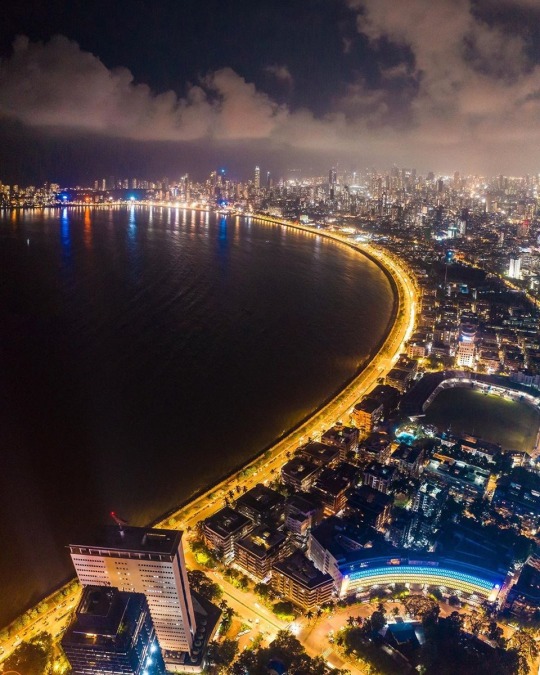
Take a stroll down Marine Drive, often known as the Queen’s Necklace due to its brilliant nighttime lights, to fully experience Mumbai’s coastal allure. Because of the spectacular views of the Arabian Sea at sunset, both locals and tourists love this promenade.
Get out of the congested city streets and explore the mysterious Elephanta Caves. From Mumbai, you can immediately take a ferry to Elephanta Island, where you can explore historic rock-cut tunnels decorated with incredible sculptures and carvings, including the well-known Trimurti sculpture.
The old and the contemporary coexist in Mumbai, a city of contrasts. Although it is a thriving metropolis, it values its spiritual past. Mumbai’s religious diversity is honored by the majestic mosque known as Haji Ali Dargah, which is located on an island in the Arabian Sea and offers a calm sanctuary from the activity of the city. An additional sacred place and a representation of the city’s devotion is the Siddhivinayak Temple, which is devoted to Lord Ganesha.

Consider taking a day excursion to Sanjay Gandhi National Park, a huge oasis in the middle of the urban jungle, if you’re looking for a closer connection with nature. Hike through the area’s lush vegetation, take in the Kanheri Caves’ old Buddhist sculptures, and maybe you’ll even spot some local species like deer and leopards.
As soon as the sun goes down, Mumbai’s thriving nightlife bursts to life. Among other fun locations, rooftop bars and live music venues provide views of the Arabian Sea. If you really want to comprehend Mumbai, go see a Bollywood film in one of its best theaters. You’ll get a taste of the glamour and drama of Mumbai’s Bollywood thanks to this cultural encounter.

Mumbai’s inhabitants also referred to as Mumbaikars, are a testament to the city’s tenacity in a context defined by its frenetic speed and ambition. Mumbai is more than just a tourist destination because of the people’s tenacity, kindness, and feeling of community; it is an encounter that will have a lasting effect on your heart and spirit. Mumbai offers a fascinating voyage full of discoveries and activities, whether you want to experience the city’s vibrant energy or go sightseeing and eat street food.
Conclusion
In Mumbai, every street has a distinct history to share, every turn is an exhilarating journey, and every encounter with a local is precious. Mumbai is a lovely, energetic city. For travelers seeking an exciting and engaging experience, this city is a must-visit destination because it has many facets and embodies India’s past, present, and future. Whether you’re exploring iconic landmarks like the Gateway of India or savoring the vibrant street food scene, every moment in Mumbai is enriched by the city’s vibrant spirit. When it’s time to rest and recharge, the Empresa Hotel comfortable and convenient haven amidst the bustling streets, ensuring your stay in this dynamic city is both memorable and enjoyable. The hotel is marveled with immaculate rooms, exquisite dining halls, rooftop lounges, banquet halls, and a myriad of other best-in-class facilities. It is located in the midst of Lokhandwala which is full of energy fun shopping and food.
#Mumbai#Things to do in mumbai#hotel in mumbai#travel blog#travel bloger#hotel#travel#traveling#travel in mumbai#tourists
2 notes
·
View notes
Photo

Kumbharwada: The Potter Community of Dharavi 🏺 Take a walk inside the local kumbharwada community and get the deep history of the place. Take a walk and see the daily life and pottery work. Meet the local family and have a cup of tea with them. You will also get a chance to put your hands into the pottery wheel and try to make pots. Also there will be a assist to teach pottery making 15 minutes. Contact us for bookings!! www.mumbaidreamtours.com +91 900413 5215 #kumbharwada #mumbai #dharavi #prajapati #india #ganpati #kumbhar #dharavi #diya #clay #dharaviproducts #love #comment #kumbharwadaproducts #dharavidiya #diwali #claydiya #photography #makeinindia #lights #handmadepottery #mumbaitourism #diwaligifts #clayproducts #light #diwalidiyas #proudlymadeindharavi #like #follow #mumbaiwalkingtour (at Dharavi Kumbharwada) https://www.instagram.com/p/ClycyZfhAVH/?igshid=NGJjMDIxMWI=
#kumbharwada#mumbai#dharavi#prajapati#india#ganpati#kumbhar#diya#clay#dharaviproducts#love#comment#kumbharwadaproducts#dharavidiya#diwali#claydiya#photography#makeinindia#lights#handmadepottery#mumbaitourism#diwaligifts#clayproducts#light#diwalidiyas#proudlymadeindharavi#like#follow#mumbaiwalkingtour
1 note
·
View note